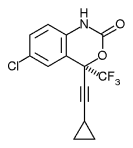A trial started over 400 antiretroviral-naive patients on an intensive 4-drug regimen--Trizivir, (AZT, 3TC, and abacavir) together with Sustiva (efavirenz). After 48 weeks, 282 of them were randomized to either continue that regimen, or to drop the Sustiva, for another 48 weeks in the study. "After induction with ABC/3TC/ZDV + EFV, simplification to ABC/3TC/ZDV alone maintained virologic control and immunologic response, reduced fasting lipids and ART-associated adverse events, and improved adherence" (quoted from abstract).
There were more virologic failures in the group that dropped the Sustiva and switched to three drugs (16 vs. 8), but this difference did not reach statistical significance (P = 0.134).
Markowitz M, Hill-Zabala C, Lang J, and others, for the ESS40013 study team. Induction With Abacavir/Lamivudine/Zidovudine Plus Efavirenz for 48 Weeks Followed by 48-Week Maintenance With Abacavir/Lamivudine/Zidovudine Alone in Antiretroviral-Naive HIV-l-Infected Patients. JAIDS (Journal of Acquired Immune Deficiency Syndromes). July 1, 3005; volume 39, number 3, pages 257-264.
COPYRIGHT 2005 John S. James
COPYRIGHT 2005 Gale Group



